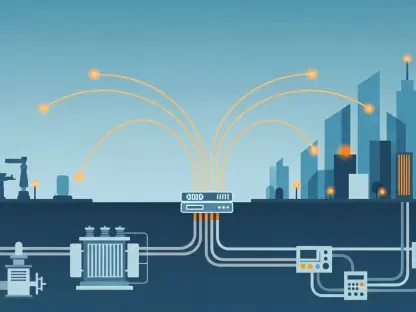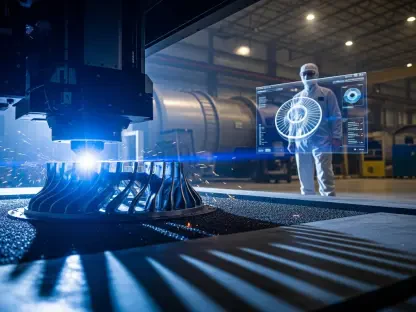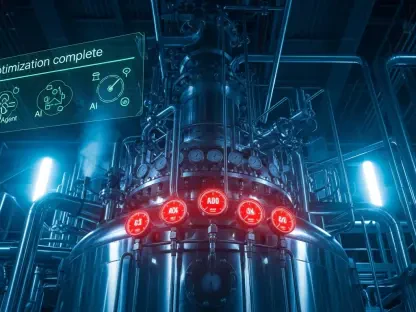India’s automotive industry is on the cusp of a significant transformation with the recent announcement from VE Commercial Vehicles (VECV), a joint venture between Volvo Group and Eicher Motors, to invest ₹544 crore in a new manufacturing facility in Madhya Pradesh. This substantial financial commitment is set to establish a greenfield plant in Vikram Udyogpuri near Ujjain, poised to become a global hub for Volvo’s advanced 12-speed Automated Manual Transmission (AMT) system. Far from being just another factory, this facility represents a bold stride toward technological innovation, economic growth, and a stronger foothold for India in the international automotive market. With an initial production capacity of up to 40,000 units annually, the project not only caters to domestic needs but also targets export markets while maintaining Volvo’s rigorous quality benchmarks. This move signals deep confidence in India’s manufacturing prowess and underscores the nation’s growing integration into global supply chains at a time when the push for industrial self-reliance is stronger than ever.
A Strategic Leap in Global Manufacturing
The decision to position the Madhya Pradesh facility as a worldwide production and final assembly center for Volvo Group’s AMT systems marks a pivotal moment for VECV and India’s role in global manufacturing. This strategic choice elevates VECV’s standing within Volvo’s international operations, highlighting India’s capability to manage high-tech production at scale. The plant is designed with scalability in mind, aiming to increase local content over time to meet evolving market demands. By establishing such a critical hub, the investment showcases how India can align with global quality standards while leveraging its competitive advantages. This development is not merely about expanding production capacity but about creating a sustainable model that can adapt to future needs, ensuring long-term relevance in the fast-paced automotive sector. It also sets a precedent for other multinational corporations to view India as a reliable base for advanced manufacturing initiatives.
Beyond the immediate operational impact, this facility strengthens India’s reputation as a destination for cutting-edge industrial projects. The focus on producing sophisticated components like the AMT system demonstrates a shift from traditional manufacturing to high-value, technology-driven production. This transition is crucial for positioning India as a leader rather than a follower in the global automotive supply chain. The project’s emphasis on meeting international benchmarks while fostering local expertise speaks to a broader vision of industrial growth. Additionally, it opens doors for knowledge transfer and skill development, equipping the local workforce with the tools to handle complex technologies. As a result, the Madhya Pradesh plant becomes a symbol of India’s potential to not only participate in but also shape the future of global manufacturing trends, reinforcing the country’s strategic importance on the world stage.
Economic Growth Through National Alignment
This ₹544 crore investment aligns seamlessly with the Indian government’s “Make in India” initiative, which seeks to promote self-reliance and attract foreign direct investment into key sectors like automotive manufacturing. By localizing the production of advanced components such as the 12-speed AMT system, VECV reduces reliance on imports and bolsters India’s industrial ecosystem. Madhya Pradesh, in particular, emerges as a significant beneficiary, transforming into a promising hub for automotive innovation. The economic ripple effects are substantial, with the potential to create numerous jobs and drive regional development. This project exemplifies how targeted investments can support national goals while fostering growth at the state level, contributing to a more robust and interconnected industrial framework across the country.
Moreover, the economic impact extends beyond immediate job creation to long-term industrial sustainability. The establishment of this facility in Vikram Udyogpuri is likely to attract ancillary industries and suppliers, creating a vibrant ecosystem around automotive manufacturing in the region. This clustering effect can lead to improved infrastructure, enhanced logistics, and greater investment in local talent development. The Madhya Pradesh government’s proactive support in facilitating this project further underscores the importance of public-private collaboration in achieving economic objectives. By reducing dependency on foreign components, the initiative also strengthens India’s trade balance and positions the nation as a competitive exporter of high-tech automotive solutions. Ultimately, this investment serves as a catalyst for transforming regional economies while aligning with broader national priorities for industrial and economic advancement.
Driving Innovation with AMT Technology
The introduction of Volvo’s 12-speed AMT system through this new facility represents a transformative leap for India’s commercial vehicle sector, addressing critical operational challenges with cutting-edge technology. Proven in global markets, this system enhances fuel efficiency, minimizes driver fatigue, and improves vehicle uptime—attributes that are increasingly vital as the industry moves toward higher-capacity vehicles and greater automation. This technological advancement aligns with the evolving demands of fleet operators who seek reliable and cost-effective solutions. By bringing such innovation to Indian shores, VECV is paving the way for a modernized transport sector that prioritizes efficiency and driver well-being, setting new standards for performance in commercial vehicles.
Furthermore, the adoption of AMT technology reflects a broader commitment to sustainability and productivity within India’s automotive landscape. As fuel costs continue to pose challenges for the transport industry, the improved efficiency offered by this system can significantly lower operating expenses for businesses. Simultaneously, reducing driver fatigue addresses a pressing concern in a sector often plagued by long hours and demanding conditions, potentially improving safety outcomes on Indian roads. This technology also positions India to meet global environmental standards by cutting down on fuel consumption and emissions. The ripple effect of these advancements could inspire further innovation across related industries, encouraging the development of complementary technologies and services. In essence, this step by VECV not only modernizes the commercial vehicle market but also contributes to a more sustainable and efficient future for transportation in India.
Cementing India-Sweden Industrial Collaboration
This substantial investment builds on an 18-year partnership between Volvo Group and Eicher Motors, further strengthening the industrial ties between India and Sweden. VECV’s history of innovation, evidenced by its Pithampur plant serving as a global hub for Volvo’s engines, provides a solid foundation for this latest venture. Stakeholders from both entities describe this collaboration as a mutually beneficial synergy, combining technical expertise with a shared vision for progress. The trust developed over nearly two decades enables seamless integration of global standards with local capabilities, positioning this project as a model for international cooperation. This partnership exemplifies how long-term relationships can drive meaningful advancements in emerging markets like India.
Additionally, the collaboration highlights the strategic importance of blending global technology with local market insights to create tailored solutions. The success of previous joint efforts, such as the production of fuel-efficient engines, instills confidence in the potential of this AMT facility to deliver similar impact. This investment also enhances India’s role as a key player in Volvo’s global strategy, fostering opportunities for further joint projects. The mutual benefits extend to knowledge sharing and capacity building, as Indian engineers and technicians gain exposure to cutting-edge practices. Support from both corporate leadership and governmental bodies in Madhya Pradesh reinforces the collaborative spirit driving this initiative. Ultimately, this strengthened India-Sweden partnership not only boosts VECV’s standing but also sets a benchmark for how cross-border alliances can fuel industrial and economic growth in dynamic markets.
Industry Trends and Future Implications
The ₹544 crore investment by VECV mirrors a larger trend of integrating India into global manufacturing networks, capitalizing on the country’s cost competitiveness and skilled workforce. This move underscores India’s growing appeal as a destination for high-value industrial projects, supported by a combination of technical expertise and market potential. Leaders from VECV, Volvo Group, and Eicher Motors have emphasized the project’s significance in modernizing transport solutions and meeting the evolving needs of customers. The strong backing from the Madhya Pradesh government further illustrates how coordinated efforts between public and private sectors can accelerate India’s ascent as a leader in the global automotive industry, setting the stage for future investments.
Looking ahead, this initiative points to broader implications for the industry, particularly in the adoption of advanced technologies and automation in commercial vehicles. The focus on AMT systems aligns with global shifts toward efficiency and sustainability, addressing challenges like driver shortages and rising operational costs. This development could inspire similar projects that prioritize innovation, further embedding India into international supply chains. The success of this facility may also encourage other states to compete for foreign investments, fostering a competitive yet collaborative industrial environment. As India continues to build on such milestones, the focus should remain on sustaining momentum through policies that support manufacturing growth and technological advancement, ensuring that the benefits of such investments are felt across the economy for years to come.









